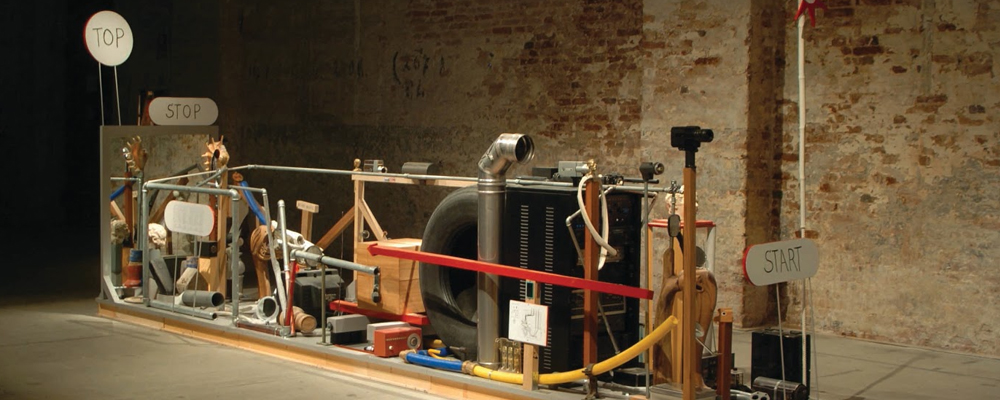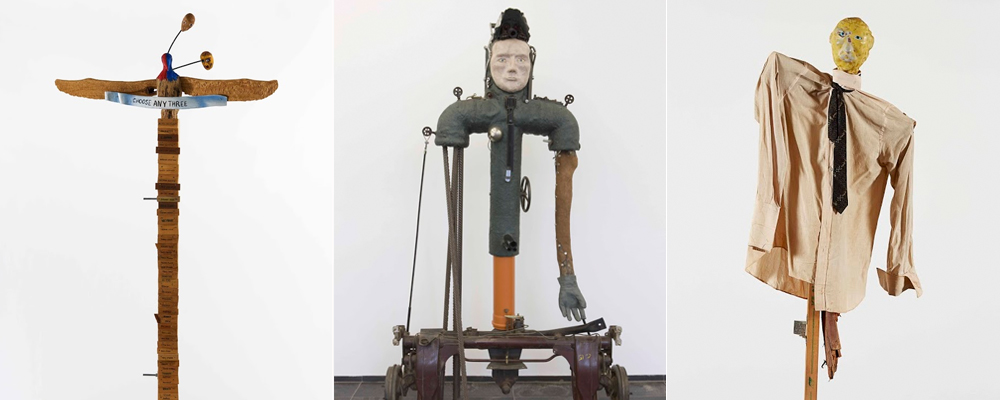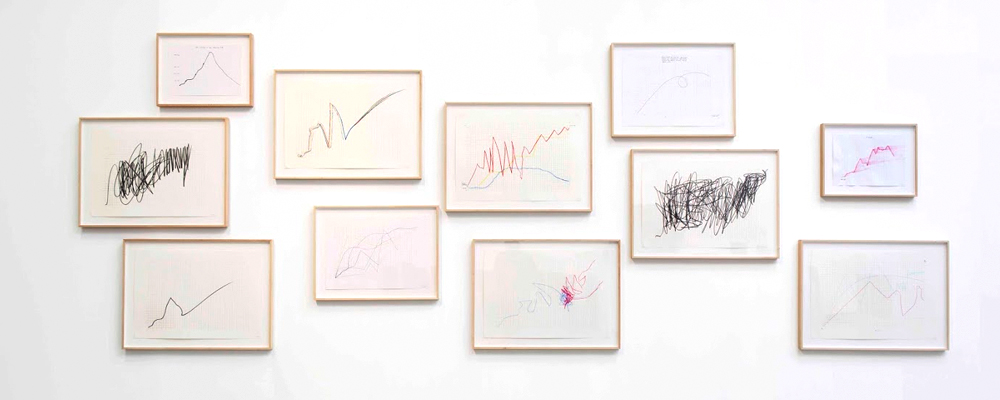Cherokee Artist Jimmie Durham Breaks Self-Imposed Exile in Landmark Show at Hammer Museum
Steve Silkin
Since Jimmie Durham set up in Europe 20 years ago, he has chosen not to exhibit in the United States for personal, practical and political reasons. But that changes now. “Jimmie Durham: At the Center of the World” opens in late January at the Hammer Museum in Westwood as the first North American retrospective of Durham’s works as an artist, essayist and activist, and it showcases his call for rights and dignity for indigenous people.
Durham’s work is magnetic. The sculpture of “Malinche” is an arresting portrait of a native, a wooden head on a skeletal wood structure that gazes at the viewer with a dour expression of recrimination through painted decorations and bright accessories. “Malinche” and his other sculptures demand respect and empathy. But context is important in everything, and art is no exception, so Durham’s story is as magnetic as his creations. He was born in Washington, Ark., in 1940 as a Cherokee Nation Native American. But he came into his own in the revolutionary year of 1968 as an art student in Switzerland, specializing in performance and sculpture and forming a group of artists dedicated to bringing art out of the ivory tower and into public life.
More significantly, he formed Incominidios, an activist group of his friends from South America to promote the cause of the indigenous. That led to his return to the United States to participate in the 1973 occupation of Wounded Knee in South Dakota, a landmark protest for Native American rights and the movement then known as “Red Power.” Durham became a leader in the movement and was named as the group’s representative to the United Nations in New York. He was based there as an editor of native rights publications until 1980, when he dedicated himself to art making with a focus on the struggles of native peoples. That work took him first to Mexico, then to Europe, where he now splits his time between Berlin and Naples.
His films, artworks, poetry and essays have been the subject of frequent exhibitions and retrospectives in Europe since he moved there in 1994. While he has declined to bring a show to the United States during that time, most museums around the world, including the Whitney Museum of American Art in New York and the Museum of Contemporary Art in Chicago, display his works.
The Hammer Museum has scheduled several tours and presentations on the occasion of the exhibit that will feature discussions of his activism and artwork. In addition, a March 8 screening of “Incident at Oglala,” a film depicting the struggles of Native Americans in the 1970s, will provide some context for Durham’s artwork and his life of activism.
“Jimmie Durham: At the Center of the World” is Jan. 29 – May 7 at the Hammer Museum, 10899 Wilshire Blvd., Westwood.





